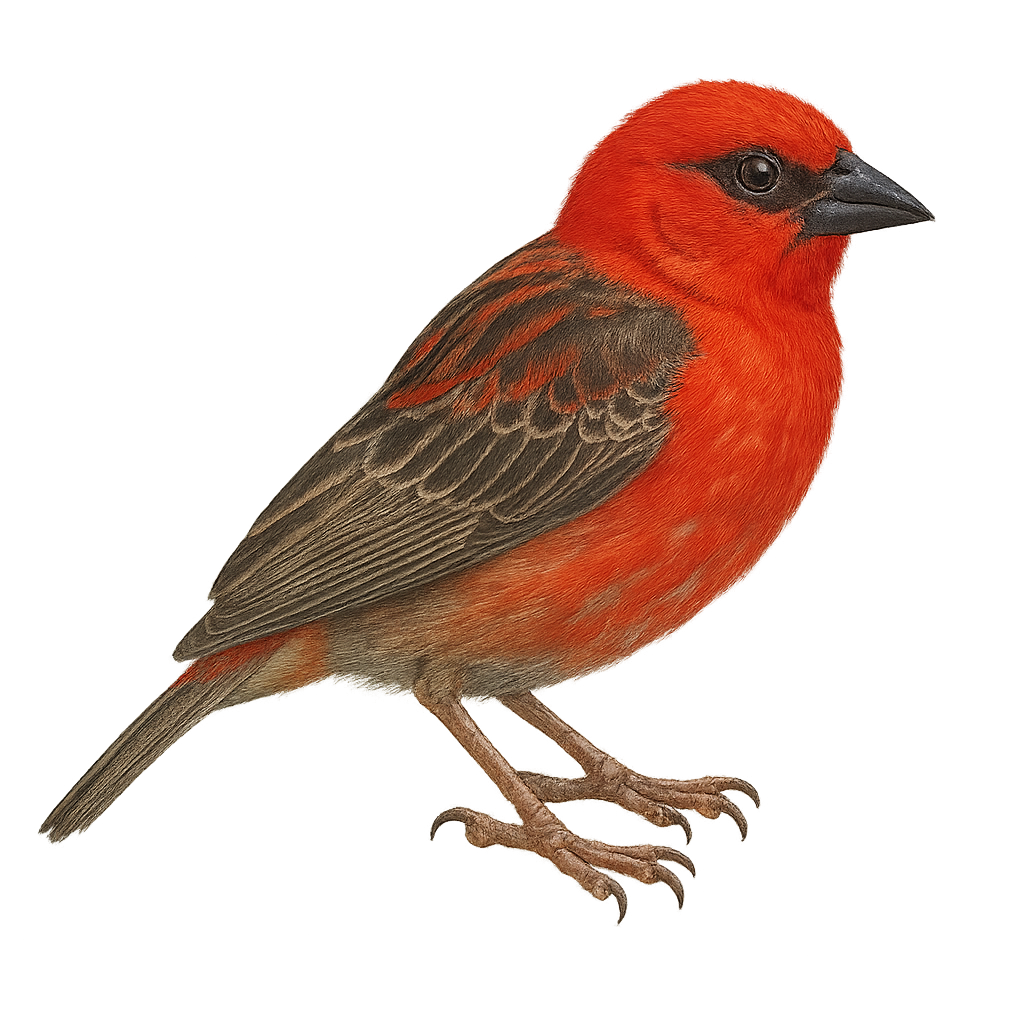Your wildlife photography guide.
Explore the red fody in detail, study its behavior, prepare your shots.
Where to observe and photograph the red fody in the wild
Learn where and when to spot the red fody in the wild, how to identify the species based on distinctive features, and what natural environments it inhabits. The WildlifePhotographer app offers tailored photography tips that reflect the red fody’s behavior, helping you capture better wildlife images. Explore the full species profile for key information including description, habitat, active periods, and approach techniques.
Red Fody
Scientific name: Foudia madagascariensis

IUCN Status: Least Concern
Family: PLoceidae
Group: Birds
Sensitivity to human approach: Tolerant
Minimum approach distance: 5 m
Courtship display: October to December
Incubation: 11-13 jours
Hatchings: October to December
Habitat:
Forests, agricultural areas, urban gardens
Activity period :
Primarily active during the day, with peak activity in the morning and late afternoon.
Identification and description:
The Red Fody, or Foudia madagascariensis, is a small bird endemic to Madagascar, renowned for its striking plumage. Males display a vivid red color on the head and chest, contrasting with brownish wings and back, while females and juveniles are duller, with brownish hues and streaks. This bird measures about 15 cm in length and weighs between 14 and 19 grams. It is often seen in forests, agricultural areas, and even urban gardens. The Red Fody is a sociable bird, living in small groups, and primarily feeds on seeds, insects, and fruits. Its adaptability to various habitats makes it a resilient species, although it is sometimes threatened by the loss of its natural habitat.
Recommended lens:
400 mm – adjust based on distance, desired framing (portrait or habitat), and approach conditions.
Photography tips:
To photograph the Red Fody, prioritize early morning hours when the light is soft and flattering. Use a 400mm lens or longer to capture precise details without disturbing the bird. Be patient and discreet, keeping a safe distance of at least 5 m. Look for natural backgrounds to highlight the male's vivid red plumage. If possible, use a tripod to stabilize your camera and achieve sharp images.
The WildlifePhotographer App is coming soon!
Be the first to explore the best nature spots, track rutting seasons, log your observations, and observe more wildlife.
Already 1 439 wildlife lovers subscribed worldwide

